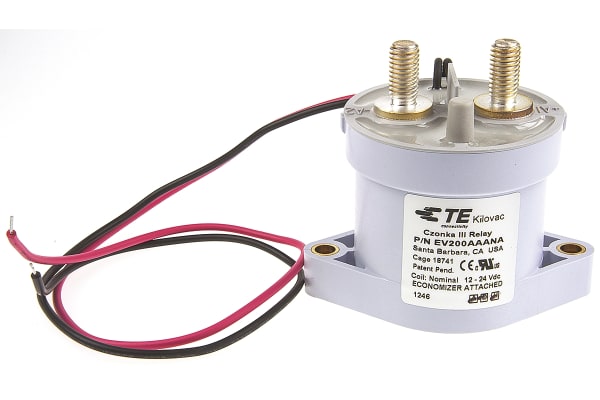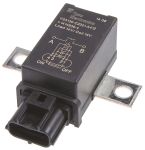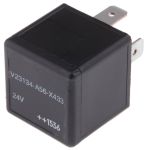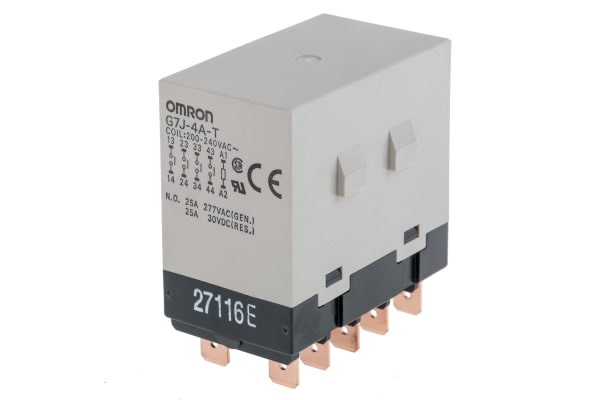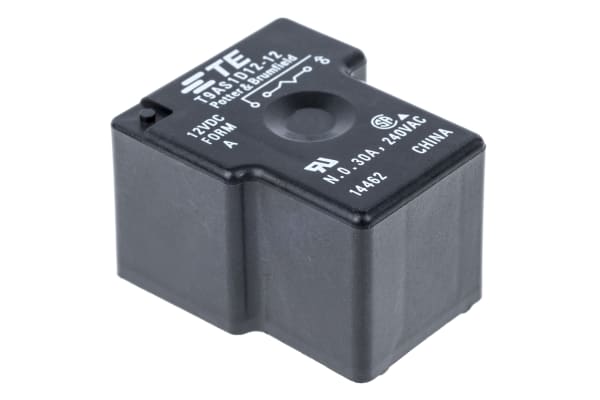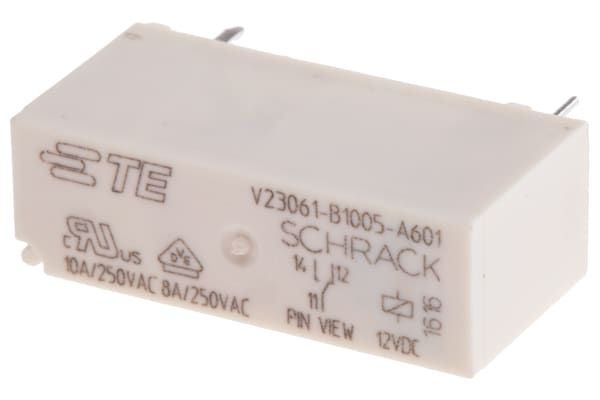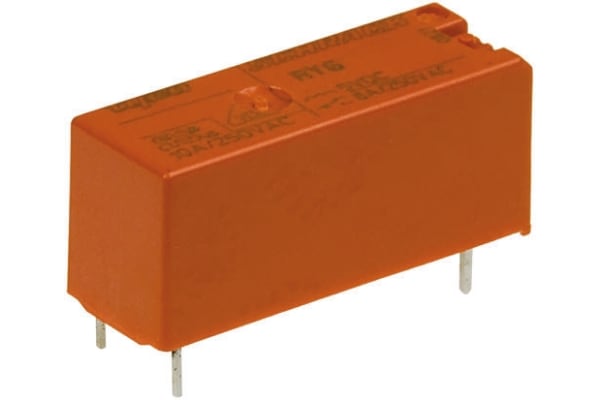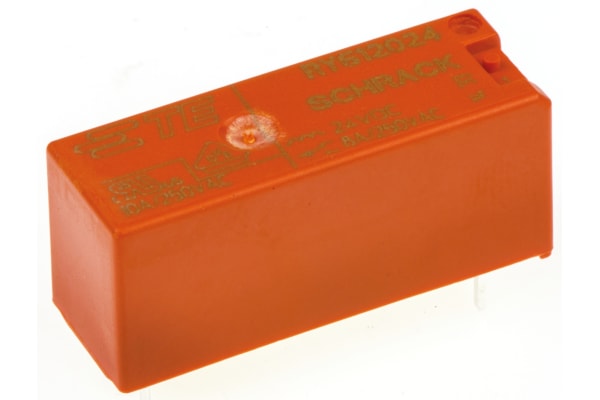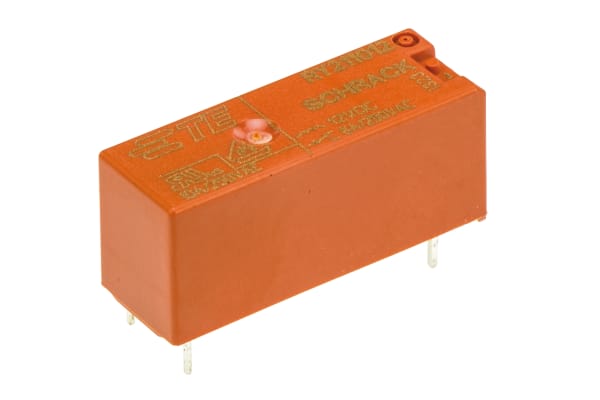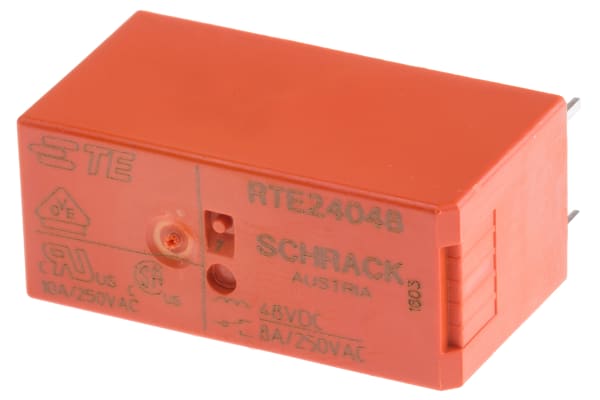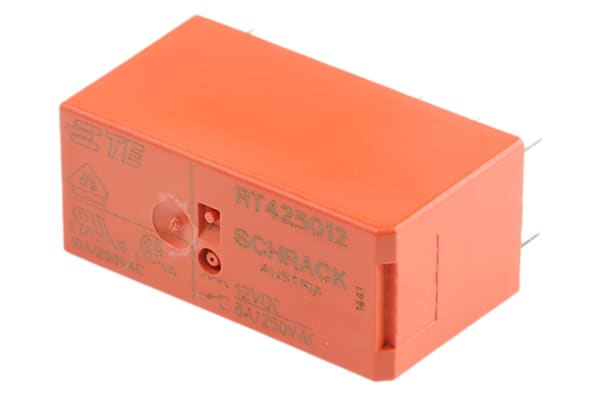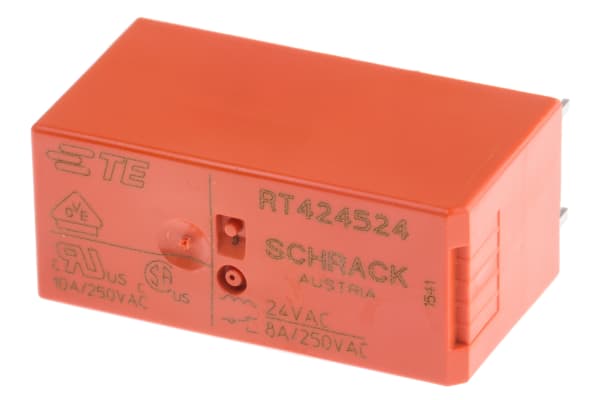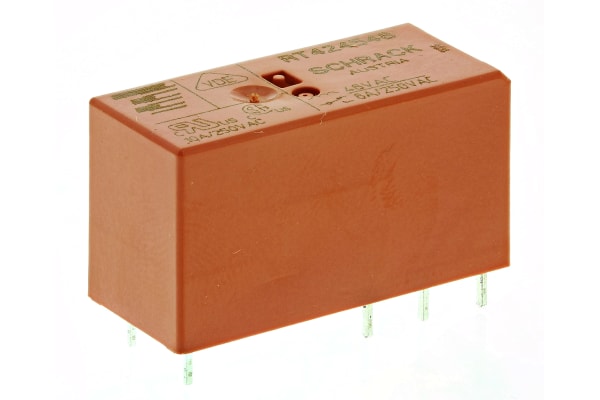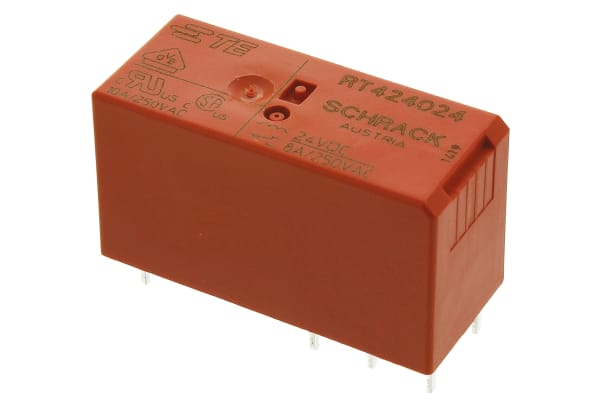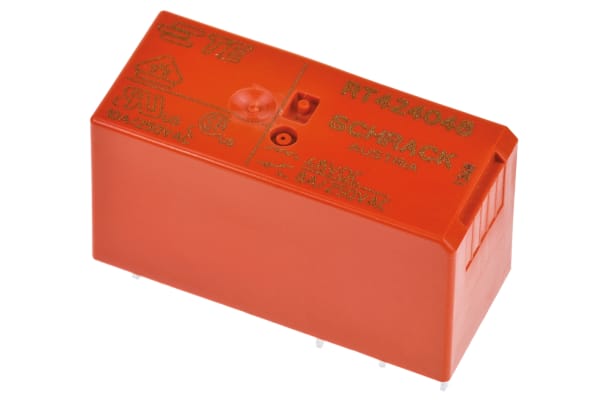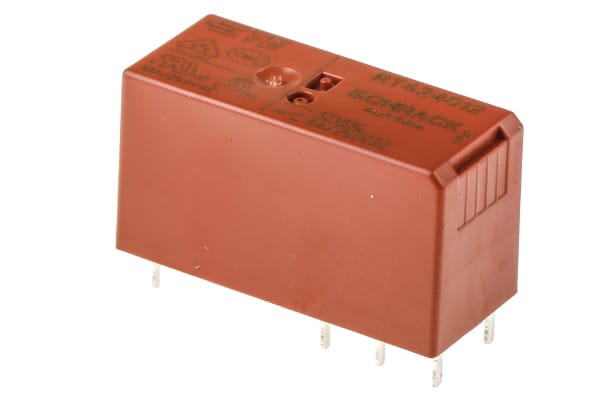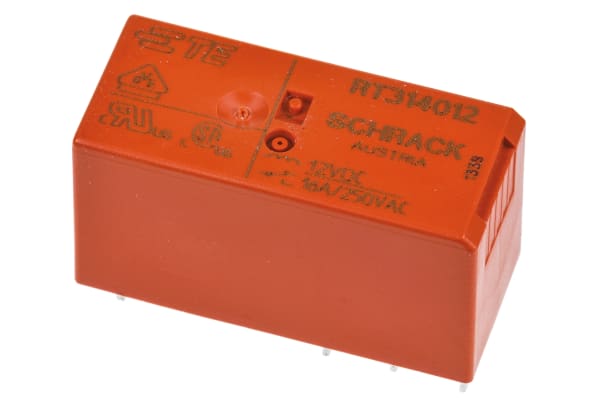Non-Latching Relays
Relays are electrical switches that are operated by electrical impulses with the primary function to open and close a circuit, they can also be referred to as industrial switches. There are 2 main types available, latching and non–latching relays.How do non-latching relays work?Non-latching relays are in a normally closed (NC) position and will stay in this state without power. When power passes through the circuit, the relay switched to a normally open (NO) position by using an internal coil to generate a magnetic force, holding this NO position. Once the current is turned off, it returns to the NC position. This makes non-latching relays well suited to push-button applications like keyboards and micro-controller input buttons.What are non-latching relays used for?Non-latching relays are highly durable and versatile components, making their performance long lasting and suitable for use in a wide range of applications, such as:Automotive enginesHousehold appliancesIndustrial machineryMedical equipmentTelecommunications equipmentWhat is the difference between latching and non-latching relays?Both types of relays in similar in design and function, however, a significant difference between them is that a latching relay will remain in the last position it when it was last powered, whereas a non-latching goes back to its normal position. This makes each more type of relay suitable for different applications. Considerations when selecting a relayWhen choosing a relay, it is important to consider a number of specifications to ensure it is fit for purpose, some factors include:Coil voltage – the required voltage to actuate the switching mechanism. If a voltage is too high this could damage the components, if it is too low then it will not actuate. Contact configuration – This is the state the contacts are in without power. For example SPST, single pole single throw.Contact material – the relay contacts are available in many materials that have certain properties. Common materials are gold, silver, tin oxide and nickel Coil power – the amount of power (watts) the coil operates at. This must match the power in the circuit for correct function. Coil resistance – the amount of resistance (ohms) in the circuit that the coil creates.
-
TE Connectivity, 9 → 36V dc Coil Automotive Relay SPNO, 500A Switching Current Flange Mount Single Pole,
IDR2,846,924.38 -
TE Connectivity, 12V dc Coil Automotive Relay SPNO, 190A Switching Current Flange Mount Single Pole, V23130C2021A412
IDR1,200,885.61 -
TE Connectivity, 24V dc Coil Automotive Relay SPDT, 40A Switching Current Plug In Single Pole, V23134A0056X433
IDR203,381.71 -
Omron, 240V ac Coil Non-Latching Relay 4PST-NO, 25A Switching Current Panel Mount, 4 Pole, G7J4AT200240AC
IDR730,663.74 -
TE Connectivity, 12V dc Coil Non-Latching Relay SPNO, 30A Switching Current PCB Mount Single Pole, T9AS1D12-12
IDR74,576.79 -
TE Connectivity, 24V dc Coil Non-Latching Relay 4PDT, 2A Switching Current PCB Mount, 4 Pole, V23154D 721B110
IDR1,954,100.70 -
TE Connectivity, 12V dc Coil Non-Latching Relay SPDT, 8A Switching Current PCB Mount Single Pole,
IDR120,413.72 -
TE Connectivity, 12V dc Coil Non-Latching Relay SPDT, 8A Switching Current PCB Mount Single Pole, RY612012
IDR95,974.35 -
TE Connectivity, 24V dc Coil Non-Latching Relay SPDT, 8A Switching Current PCB Mount Single Pole, RY612024
IDR97,652.59 -
TE Connectivity, 12V dc Coil Non-Latching Relay SPDT, 8A Switching Current PCB Mount Single Pole, RY211012
IDR58,004.17 -
TE Connectivity, 48V dc Coil Non-Latching Relay DPDT, 8A Switching Current PCB Mount, 2 Pole, RTE24048
IDR59,787.30 -
TE Connectivity, 24V dc Coil Non-Latching Relay DPNO, 8A Switching Current PCB Mount, 2 Pole, RT444024
IDR71,744.76 -
TE Connectivity, 24V dc Coil Non-Latching Relay DPDT, 8A Switching Current PCB Mount, 2 Pole, RT425024
IDR147,894.90 -
TE Connectivity, 12V dc Coil Non-Latching Relay DPDT, 8A Switching Current PCB Mount, 2 Pole, RT425012
IDR148,104.68 -
TE Connectivity, 115V ac Coil Non-Latching Relay DPDT, 8A Switching Current PCB Mount, 2 Pole, RT424615
IDR76,359.92 -
TE Connectivity, 24V ac Coil Non-Latching Relay DPDT, 8A Switching Current PCB Mount, 2 Pole, RT424524
IDR66,919.82 -
TE Connectivity, 48V ac Coil Non-Latching Relay DPDT, 8A Switching Current PCB Mount, 2 Pole, RT424548
IDR94,610.78 -
TE Connectivity, 24V dc Coil Non-Latching Relay DPDT, 8A Switching Current PCB Mount, 2 Pole, RT424024 6-1393243-8
IDR88,841.83 -
TE Connectivity, 48V dc Coil Non-Latching Relay DPDT, 8A Switching Current PCB Mount, 2 Pole, RT424048
IDR77,933.27 -
TE Connectivity, 12V dc Coil Non-Latching Relay DPDT, 8A Switching Current PCB Mount, 2 Pole, RT424012 6-1393243-3
IDR67,129.60 -
TE Connectivity, 24V dc Coil Non-Latching Relay SPNO, 16A Switching Current PCB Mount Single Pole, RT334024
IDR63,458.45 -
TE Connectivity, 12V dc Coil Non-Latching Relay SPNO, 16A Switching Current PCB Mount Single Pole, RT334012
IDR44,892.92 -
TE Connectivity, 24V dc Coil Non-Latching Relay SPDT, 16A Switching Current PCB Mount Single Pole, RT315024
IDR152,510.06 -
TE Connectivity, 12V dc Coil Non-Latching Relay SPDT, 16A Switching Current PCB Mount Single Pole, RT314012 9-1393239-5
IDR52,759.67



